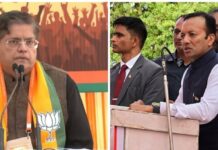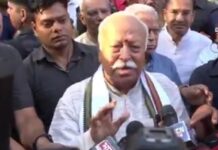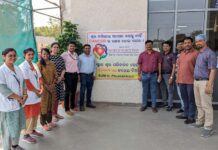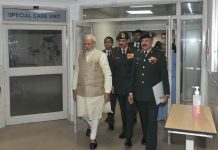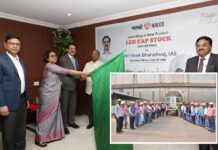By Our Correspondent
BHUBANESWAR/NEW DELHI: As many 4,50,955 get Jobs Cards in Odisha between April-September 2020 as against 2,39,286 in the year 2019-20. A total of 86,81,928 new job card during the current FY so far, has been issued as compared to 36,64,368 new job card issued during the same period of the FY 2019-20.
Mahatma Gandhi NREGS is a demand driven wage employment scheme. Every adult member of a household in a rural area, having job card (as per Mahatma Gandhi NREG Act), is eligible for a demand for a job under the scheme. There is no provision to register a Job card holder categorised as migrant labourers/ family in the job card in the scheme. A job card can be issued to a migrant labour/family as per the provision of the Act against a demand by the migrant labour/family.
Mahatma Gandhi NREGS is a demand driven wage employment scheme. The Act mandates to provide for the enhancement of livelihood security of the household in rural areas of the country by assuring upto one hundred days of guaranteed wage employment in every financial year to every household whose adult members volunteer to do unskilled manual works. The adult member of every household residing in any rural area and willing to do unskilled manual work may submit the names, age and the address of the household to the Gram Panchayat at the village level, in whose jurisdiction they reside, for registration of their household for issuance of a job card. No data of past employment history is maintained under Mahatma GandhiNREGS.
Meanwhile, the Pradhan Mantri Gram Sadak Yojana (PMGSY) was launched, as a one-time special intervention, with the objective to provide rural connectivity, by way of a single all- weather road, to the eligible unconnected habitations of designated population size (500+ in plain areas and 250+ in North-Eastern States, Himalayan States, Deserts and Tribal Areas as per 2001 census) in the core network for uplifting the socio-economic condition of the rural population. Hence, the primary objective of the scheme was to provide all-weather road connectivity to eligible un-connected habitations. No physical targets in terms of Kilometers or financial targets or allocations were fixed for states. The fund allocation to states has been made in subsequent years commensurate with the value of projects sanctioned tostates.
The Government of India subsequently launched PMGSY-II in 2013 for upgradation of 50,000 Kms of existing rural road network to improve its overall efficiency and PMGSY-III in 2019 for consolidation of 1,25,000 Km Through Routes and Major Rural Links connecting habitations, inter-alia, to Gramin Agricultural Markets (GrAMs), Higher Secondary Schools and Hospitals. For each of the above two verticals of PMGSY, state-wise physical targets have been allocated and requisite central share of funds are provided to states based on the value of projects sanctioned to states to construct the allocated length.
Rural roads under PMGSY are constructed and maintained as per the technical specifications and geometric design standards given in the Ministry of Rural Development Specifications for Rural Roads, Rural Roads Manual of the Indian Roads Congress (IRC) (IRC-SP:20) and also, where required, the Hill Road Manual (IRC:SP:48) and other relevant IRC Codes & Manuals. The choice of design and surface for the road is determined, inter-alia, by factors like traffic, soil type and rainfall, following the technical specifications laid down in the Guidelines for the design of flexible pavements for low volume rural roads (IRC: SP: 72-2015 or IRC: 37-1018, as applicable) and guidelines for design of rigid pavements (IRC: SP:62-2014).
The works under the scheme are sanctioned by the Ministry based on the Detailed Project Reports (DPRs) submitted by the respective State Governments. In preparation of DPRs, the State Governments factor into the cost necessitated due to physical and environmental factors such as, topography, soil type, climate, traffic density, rainfall and also considering the requirements of cross drainage (CD) works, drains, and protection works as per site duly following the technical specifications prescribed by the IRC and Ministry of Rural Development.
The geography and related factors are, thus, taken into account at the time of preparing the cost estimates for the individual road work. As targets are allocated on the basis of eligible habitations in case of PMGSY-I, and on the basis of length of roads in case of PMGSY-II and III, there is no adverse consequence in terms of fund allocation to states based on geography and relatedfactors.As a measure of special dispensation, the Union Government bears 90% of the project cost in respect of projects sanctioned under the scheme in North-Eastern and Himalayan States, whereas for other states the Union Government bears 60% of the cost.


